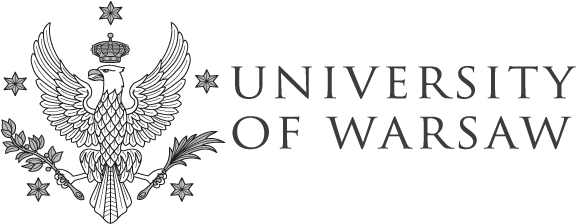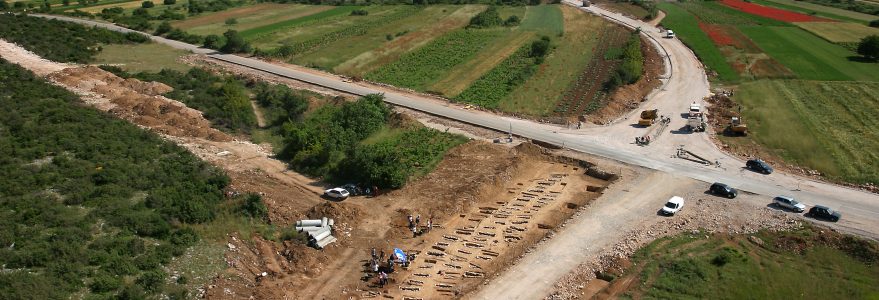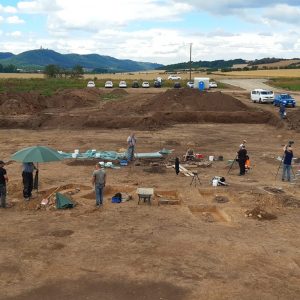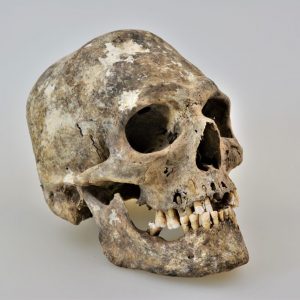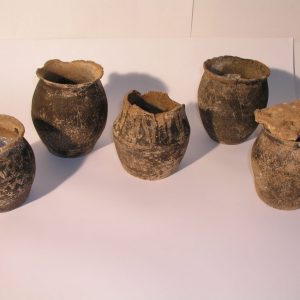Genetic analyses of medieval human remains reveal evidence of large-scale migrations and regional variation in the formation of Slavic Europe, allowing for a new perspective on European societies in the early Middle Ages. An article describing the latest research by an international team, including Prof. Małgorzata Kot from the Faculty of Archaeology at the University of Warsaw, has been published in “Nature” journal.
The spread of the Slavs is one of the most significant, yet least understood, events in European history. Beginning in the 6th century, information about Slavic groups began to appear in Byzantine and Western European (Latin) written sources. The Slavs settled vast areas from the Baltic to the Balkans and from the Elbe to the Volga. However, unlike the famous migrations of Germanic tribes such as the Goths and Lombards, or the legendary conquests of the Huns, the dawn of Slavic history has long posed a real mystery to medieval historians.
This is largely due to the fact that early Slavic societies left few traces detectable by archaeologists: they practiced cremation, built modest houses, and produced simple, unadorned pottery. And perhaps most important: for the first few centuries of their history, they produced no texts documenting their history. As a result, the term “Slavs” itself is ambiguous; it was sometimes used/imposed by chroniclers describing Slavs from outside, and over time, it began to be overused in nationalist or ideologically tinged debates. So where did these people come from, and how did they so fundamentally change the cultural and linguistic map of Europe?
Comprehensive genetic research
Historians have debated for a long time whether the spread of Slavic material culture and the Slavic language was caused by mass migration or the gradual, slow “slavicisation” of local communities, or perhaps a combination of both. However, conclusive evidence has been lacking – especially in the crucial early centuries of Slavic history, when the widespread practice of cremation prevented DNA research and archaeological remains were exceptionally modest.
An international team of researchers from Germany, Austria, Poland, the Czech Republic, and Croatia, led by the HistoGenes project consortium, has answered the questions and concerns described above by conducting the first such comprehensive study of ancient DNA (aDNA) from medieval Slavic populations. By sequencing over 550 fossil genomes, the team has demonstrated that the formation of the Slavs was, in fact, a history of migration. Genetic signatures point to the origins of this population in an area stretching from southern Belarus to central Ukraine – a region long identified by numerous archaeologists and linguists searching for the origins of Slavic culture.
Accumulated data indicate that, starting from the 6th century, large-scale migrations of people of Eastern European origin into Central and Eastern Europe resulted in an almost complete change in the genetic makeup of the populations of eastern Germany and Poland. Slavic expansion did not follow the familiar model of conquest and empire-building: instead of forming powerful armies and hierarchical social structures, the newcomers shaped theirs based on flexible societies, often organised around extended families and patriarchal kinship ties. There was also no single model of expansion that was uniform across all regions. In East Germany the change was fundamental: large, multigenerational clans became the foundation of society, and kinship networks were more extensive and structured, unlike the small, nuclear families found in these areas before the migration period.
In Croatia the arrival of groups from Eastern Europe resulted in much less transformation of existing social patterns. In the Balkans, social organisation often retained many features from earlier periods, resulting in the formation of communities in which new and old traditions intermingled or coexisted side by side. This diversity of emerging Slavic social structures demonstrates that the spread of Slavic groups was not a uniform process, but rather a dynamic transformation that adapted to local – historically conditioned – situations.
Data from Poland
In the case of Poland, research challenges earlier theories about the long continuity of populations residing here. Genetic studies show that starting in the 6th and 7th centuries, the earlier inhabitants of these lands – descendants of peoples with strong ties to Northern Europe, and particularly Scandinavia – almost completely “disappeared” and were gradually replaced by newcomers from the East, closely related to contemporary Poles, Ukrainians, and Belarusians. This conclusion is strongly supported by analysis of the earliest known Slavic skeletal burials from Poland, discovered at the site in Gródek (on the Bug River), which provide rare and direct evidence of the presence of these early newcomers.
Although the population change in Poland was enormous, genetic data also indicate rare instances of mixing between migrants and the established population. These findings underscore both the scale of population change and the complex dynamics of the processes that shaped the present-day linguistic landscape of Central and Eastern Europe.
Briefly:
- A radical change in population character: Genomic analysis of data from over 550 individuals has shown that between the 6th and 8th centuries, eastern Germany, Poland/Ukraine, and the northern Balkans experienced a fundamental change in population structure by ancestry, with over 80% of migrants from Eastern Europe.
- Regional differences: While in the north (Central and Eastern Europe) the genetic shift was almost complete, in the south of the continent (the Balkans), migrants from Eastern Europe intermingled with the local population. This diversity of ancestry is also evident in contemporary populations in this region.
- Integration, not conquest: Genetic data indicate that migration was not limited to one gender: it appears to have involved entire families and communities integrating into the new environment, not just male warriors.
- Flexible social structures: In eastern Germany, migrants brought a new type of social organisation, manifested in the tendency to form large patrilineal clans, a marked contrast to the pre-Migration Period societies, which operated within the model of smaller family units. Meanwhile, in the south (Croatia), the first migrant communities appear to have maintained more traditional or regionally stable/continuing social structures. Here the differences from the pre-Migration Period are less pronounced.


